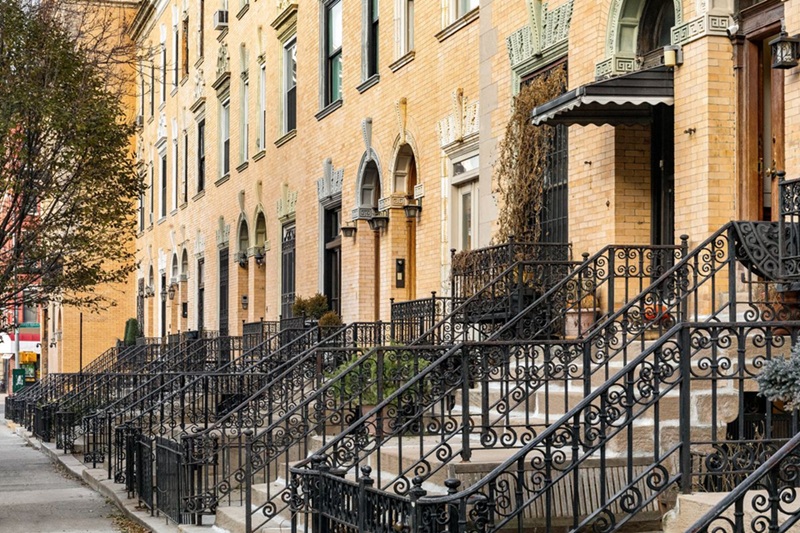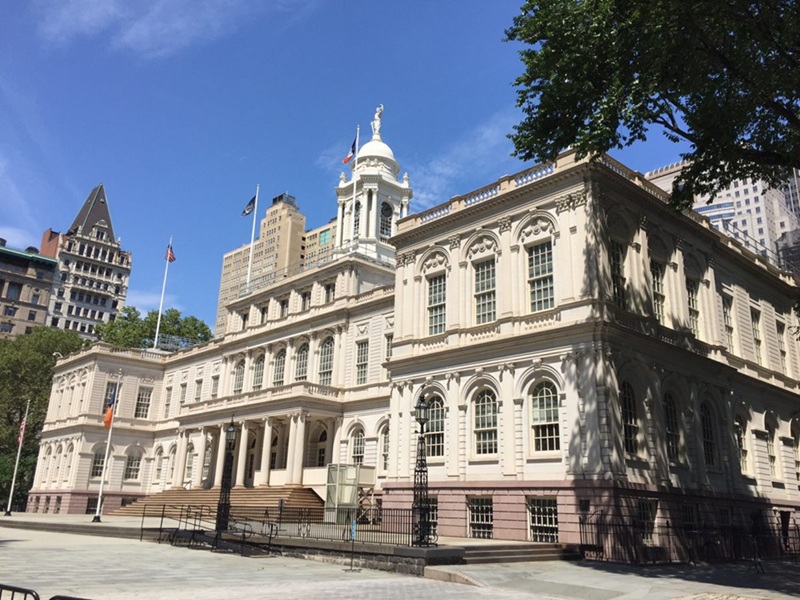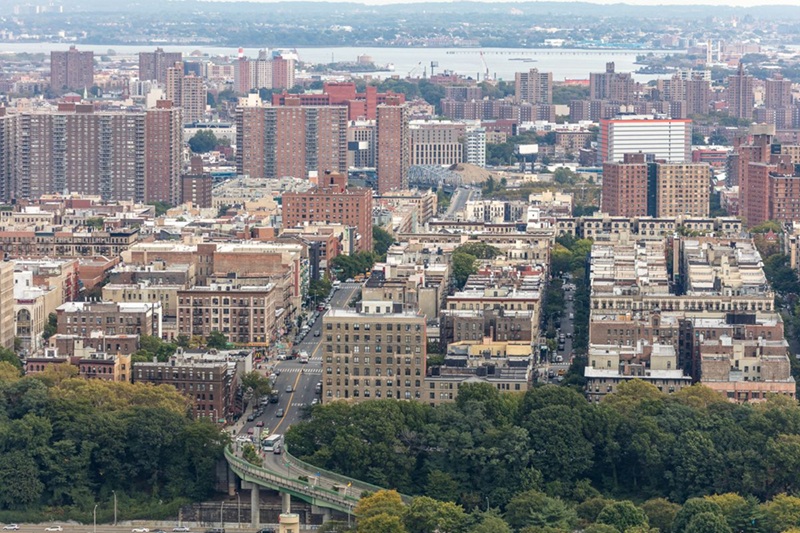
Nestled in the heart of Harlem, Manhattan, Strivers’ Row is one of New York City’s most distinctive and charming neighborhoods. Known for its beautiful brownstone buildings, tree-lined streets, and rich cultural history, Strivers’ Row has long been a symbol of Harlem’s legacy of success, pride, and community. Today, it stands as a quiet but significant testament to the neighborhood’s transformation and its prominent place in the city’s urban fabric.
A Brief History of Strivers’ Row
Strivers’ Row, so named for the ambition and success of its early residents, is located on West 138th and West 139th Streets between Adam Clayton Powell Jr. Boulevard (formerly 7th Avenue) and Frederick Douglass Boulevard (formerly 8th Avenue). The neighborhood’s creation dates back to the early 1900s, a time when Harlem was experiencing significant changes as African American families, professionals, and artists began moving into the area. It quickly became a symbol of upward mobility and social prominence within the African American community.
At the turn of the 20th century, Harlem was undergoing a transformation from a predominantly white, working-class neighborhood to an emerging center for African American culture, arts, and business. This was the beginning of the Harlem Renaissance, a cultural movement that would give rise to iconic figures such as Langston Hughes, Zora Neale Hurston, and Duke Ellington. As Harlem’s prestige grew, so did the demand for upscale housing, and Strivers’ Row emerged as a sought-after address for successful Black professionals and families.
The row’s homes were designed by the architectural firm of Hoppin & Koen and built between 1891 and 1920. These beautiful residences were intended to cater to the upwardly mobile elite of Harlem, with grand, spacious townhouses built in the classical Beaux-Arts style. The area quickly became one of the most desirable places to live in Harlem, with notable residents including musicians, writers, doctors, lawyers, and other professionals. For decades, Strivers’ Row embodied the aspirations of Harlem’s growing middle and upper class.
The Architecture of Strivers’ Row
The architectural charm of Strivers’ Row is one of the neighborhood’s most captivating features. The row is lined with an impressive array of brownstone townhouses, with some homes featuring limestone or brick facades. These buildings stand as exquisite examples of late-19th and early-20th-century design, characterized by large windows, decorative moldings, and tall, elegant doorways. The homes on Strivers’ Row are arranged in long, symmetrical lines, creating a stunning visual effect that defines the block.
The buildings on West 138th Street, known as East Strivers’ Row, were constructed first, followed by the homes on West 139th Street, or West Strivers’ Row. While both rows share similar architectural features, the homes on West 139th Street are slightly larger and more elaborate, showcasing finer details in their cornices and window treatments.
The unique design of Strivers’ Row also reflects its intended exclusivity and sophistication. The properties are set back from the street by spacious front yards, providing a sense of privacy and separation from the surrounding area. These homes, with their grand entrances and elaborate interiors, were designed to make a statement of success and prestige.
Strivers’ Row and Harlem’s Cultural Legacy
While Strivers’ Row was originally home to the professional elite of Harlem, it also became a cultural hub, helping to shape Harlem’s identity as a center of African American life and artistic expression. Many of the neighborhood’s residents were prominent figures in the arts and civil rights movements.
Notable residents included:
- Bill “Bojangles” Robinson, the famous tap dancer and entertainer, who lived on Strivers’ Row during his successful career.
- E. Simms Campbell, an early Black cartoonist for The New Yorker, who lived in the area.
- Walter White, a leader of the NAACP, also called Strivers’ Row home.
These individuals, along with countless others, played vital roles in defining the cultural, artistic, and intellectual energy that Harlem is known for, and Strivers’ Row became an important part of that legacy.
During the Harlem Renaissance, the neighborhood was a central meeting place for writers, musicians, and artists who were at the forefront of the cultural movement. While much of Harlem’s cultural activity took place in places like the Apollo Theater or the Cotton Club, Strivers’ Row was a place where Harlem’s intellectual and creative elite could gather in private, enjoying the comforts and privacy that their homes provided.
As Harlem’s demographics shifted in the mid-20th century, Strivers’ Row was affected by the broader changes in the neighborhood. Economic hardship, changing political dynamics, and migration patterns altered Harlem’s landscape. Strivers’ Row, however, has maintained its historical significance and has been the subject of preservation efforts aimed at retaining its architectural beauty and cultural importance.
The Resurgence of Strivers’ Row
In recent years, Strivers’ Row has seen a resurgence in interest, driven by both its historical significance and its position in Harlem’s ongoing revitalization. Gentrification and urban renewal projects in Harlem have brought new investment and development to the area, while Strivers’ Row has managed to retain much of its original charm and character.
Many of the homes on Strivers’ Row have been carefully preserved or renovated, and the neighborhood has become increasingly attractive to people seeking the tranquility and grandeur of a historic New York City enclave. The proximity to Harlem’s cultural landmarks and easy access to other parts of Manhattan have made Strivers’ Row an appealing option for a growing number of residents, particularly those looking for a blend of historic architecture and modern amenities.
The neighborhood has also remained a symbol of Harlem’s rich African American history. Strivers’ Row continues to stand as a reminder of the African American community’s history of overcoming adversity and achieving success, even in the face of systemic challenges.
Strivers’ Row Today
Today, Strivers’ Row remains a quiet, residential haven in the heart of Harlem. While the neighborhood has become more integrated into the broader development of Harlem, it retains a sense of exclusivity and old-world elegance that is increasingly rare in New York City.
Strivers’ Row has become a destination for those interested in the history and architecture of Harlem, attracting tourists and architecture enthusiasts who come to admire the grand brownstones and learn about the neighborhood’s rich past. The surrounding area has seen an increase in amenities, including new restaurants, cafes, and boutiques, adding to the vibrancy of the neighborhood without detracting from its historic character.
For Harlem residents, Strivers’ Row remains a symbol of the neighborhood’s cultural pride and its ongoing transformation. Whether through its architectural splendor or its deep connection to the history of the Harlem Renaissance, Strivers’ Row continues to be one of New York City’s most treasured and iconic neighborhoods.
Strivers’ Row is more than just a beautiful set of brownstones in Harlem—it’s a symbol of aspiration, success, and cultural resilience. Once the home of Harlem’s intellectual and professional elite, the neighborhood continues to carry the legacy of the Harlem Renaissance while adapting to the changing dynamics of the 21st century. Strivers’ Row represents the spirit of Harlem itself: a vibrant, proud community that has always been a center for creativity, achievement, and social progress.

